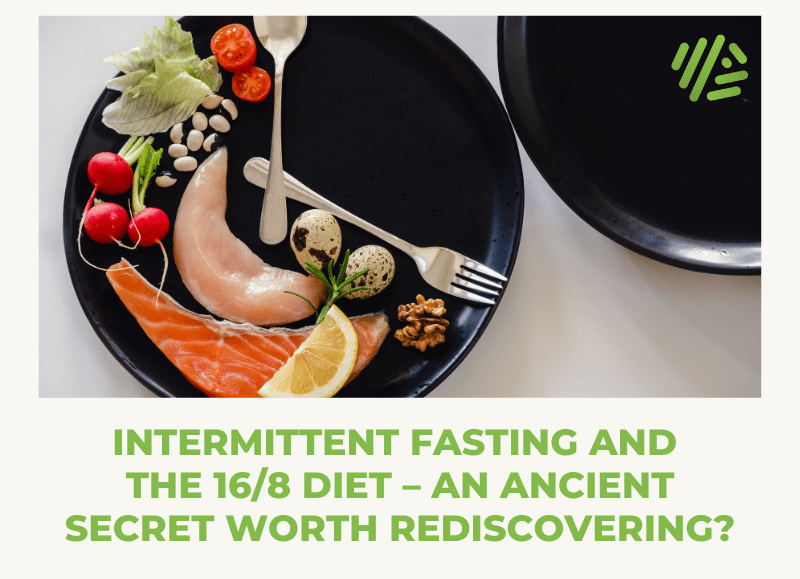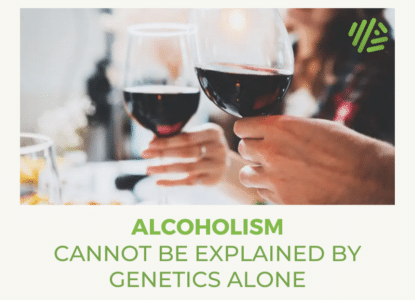Intermittent Fasting and the 16/8 Diet – an Ancient Secret Worth Rediscovering?

Contents
The concept of fasting has boomed in the past five years and many of my patients are choosing it as a viable option for longevity and weight loss. You may be one of them. Perhaps you just saw the recent review published in the prestigious New England Journal of Medicine and are looking into the fasting lifestyle a little more closely?
But then you realized fasting means, well, going without food, and that doesn’t sound too fun, does it?
If the idea of outright fasting for days at a time seems like a non-starter for you, a form of intermittent fasting called16-8 diet might be just the ticket. This (arguably easier) alternative to a total fast has gained traction in recent years and may be safer than fasts beyond 16 hours. History and modern science suggests the benefits of fasting are real, and well evidenced. . After all, the 16/8 diet is, in essence, a modern spin on an ancient practice that has served humans well for centuries. 1
Before you start restructuring your day diary, let’s take a look at how the 16/8 diet works and what it can do for you.
What is the 16/8 diet?
The 16/8 diet is a form of intermittent fasting. Or, if you get deep in the weeds of nutrition research, you might find this referred to as ‘time-restricted eating’. At it’s core, the 16/8 diet is where you fast for 16 hours out of every 24, thereby restricting your food intake to 8 hours during the day. So for example, you start eating at 11:00 am and stop eating at 7:00 pm. A breakdown is shown below.
How might a 16/8 diet look in practice? Here’s a possible intermittent fasting schedule:
- Breakfast at 8 a.m.
- Snack at 10 a.m.
- Lunch at noon
- Snack at 2 p.m.
- Dinner at 4 p.m.
- Fast (eat nothing) until breakfast the next day.
- What does “nothing” mean. It means water and coffee are fine, but all other forms of nourishment would be eliminated.
Now, this type of intermittent fasting regimen doesn’t mean you should have a free for all during your ‘eating’ hours. Some basic nutrition concepts still apply. This means eating a balanced diet that includes plenty of fresh fruits, vegetables, nuts, seeds, and healthy fats like nuts, seeds, olive oil, ande oily fish. You choices should depend on your ideal diet type revealed in your GeneFood results
Assuming that your eating window sees you consuming an appropriately healthy diet, what kinds of benefits might you see with a 16/8 intermittent fast?
The benefits of intermittent fasting on a 16/8 diet
Multiple studies suggest a variety of potential health benefits from a 16/8-style diet. This narrower ‘feeding period’ might support:
- Loss of excess body weight
- Improvements in blood glucose and insulin regulation
- Decrease in inflammatory markers
- Improvements in LDL and HDL cholesterol levels
- Anti-aging benefits
- A reduced risk of cancer
- Subjective increase in energy
- Subjective appetite supression
As with all studies, the quality and consistency of the research may vary.
In one study, men with pre-diabetes restricted food consumption to an early six-hour period, eating their last meal before 3 p.m. The men generally consumed enough food to maintain their current body weight. Even without weight loss, then, the men had improvements in insulin sensitivity, beta-cell responsiveness (a factor in blood glucose control), blood pressure, oxidative stress, and appetite. 2
In another study, women who ate less than 30% of total daily calories after 5 p.m. in the evening (i.e. who fasted for longer overnight) had an 8% reduction in C-reactive protein. 3 C-reactive protein is a marker for inflammation, so the lower the better in most cases. In this study, lower levels of C-reactive protein were considered favorable in regards to reducing the risk of breast cancer.
So far so good. Where’s the conflict?
When intermittent fasting fails
In another cross-over study, volunteers consumed either three meals a day or one afternoon meal daily for 8 weeks. Both programs provided the same number of calories overall. The one meal per day protocol was associated with a a significant reduction of fat mass and HDL cholesterol, as well as decreases in the stress hormone cortisol. 4
Sounds fairly favorable, until you look at the rest of the data.
With one meal a day, participants also had significant increases in levels of total and LDL cholesterol, as well as significant increases in morning (fasting) glucose levels and poor glucose tolerance. This means that blood glucose was higher for considerably longer after one big meal per day. Fasting plasma insulin concentrations were not significantly affected by the intermittent fasting protocol, but there was a trend towards a delayed insulin response. Fortunately, the impaired glucose tolerance was reversible once the participants reverted to a normal three meal per day eating pattern.
So, why the big difference between this study and the two I’ve already mentioned? The key to success with intermittent fasting seems to be when you consume most of your calories.
The key to successful intermittent fasting
In most studies with positive outcomes, people are usually fasting in line with circadian rhythms. They consume most calories early in the day and few to no calories after 3 or 4 p.m. In studies with poorer outcomes, participants typically eat one large meal later in the day or two or three meals in the afternoon and evening.
One recent review concluded:5
A regular meal pattern including breakfast consumption, consuming a higher proportion of energy early in the day, reduced meal frequency (i.e., 2⁻3 meals/day), and regular fasting periods may provide physiological benefits such as reduced inflammation, improved circadian rhythmicity, increased autophagy and stress resistance, and modulation of the gut microbiota.
A small study involving eleven overweight adults adds weight to this conclusion. In one arm of the study (eTRF), the volunteers ate only between 8 a.m. and 2 p.m. (an 18/6 diet if you will). In the control arm, calories were consumed between 8 a.m. and 8 p.m. Each arm lasted for 4 days. 6
The eTRF protocol led to:
- Decreases in average blood glucose over 24 hours
- Decreased blood glucose spikes
- Increases in pre-breakfast ketones and cholesterol
- Increased pre-breakfast expression of the stress response and aging gene SIRT1
- Increases in pre-breakfast expression of the autophagy gene LC3A.
- Increased evening levels of brain-derived neurotropic factor (BDNF, which helps keep your brain nimble)
- Increases in evening expression of MTOR (which regulates cell growth).
Together, these effects suggest significant anti-aging benefits for an early intermittent fasting regimen.
What else helps?
One other factor could be how much exercise people do while following a 16/8-style diet. Resistance training seems to enhance the benefits of time-a restricted 8-hour feeding period, for example.
In one study, one group of healthy men engaged in resistance training and ate meals at 1 p.m., 4 p.m., and 8 p.m. for 8 weeks. A second group of matched controls followed a more typical 8 a.m., 1 p.m., 8 p.m. schedule. The time-restricted feeding group had reduced fat mass, increased lean muscle mass, and significant decreases in blood glucose and insulin levels compared to matched controls by the end of the 8 week study. The 16/8 group also had a significant improvement in HOMA-IR (a model for insulin resistance).7
Can a 16/8 diet help you lose weight?
Strong evidence suggests that early intermittent fasting could help you lose weight. One meta-analysis found that 85% of intermittent fasting trials reported a statistically significant reduction in participants’ body weight.8
In one cross-over study, men following a time-restricted feeding pattern had significant weight loss. This small study involved 29 men who fasted overnight from 7 p.m. to 6 a.m. for two weeks. On average, the men lost 1.3% of their body weight. In contrast, they gained a small amount of weight while on their usual eating pattern. 9
Intermittent fasting and calorie restriction
Research also suggests that intermittent fasting and calorie restriction may be a good way to achieve weight loss. One study recruited 107 premenopausal women (aged 30-45) with a body mass index (BMI) between 24 and 40. 10
The women were randomized to one of two dietary protocols, both restricting calorie intake by 25% overall:
- Continued energy restriction (CER) – a daily 25% energy restriction based on a Mediterranean type diet.
- Intermittent energy restriction (IER) – a very low calorie diet (VLCD) with 75% energy restriction for 2 consecutive days a week, and a Mediterranean type diet for the remaining days, with overall calorie intake intended to maintain body weight.
After 24 weeks:
- The IER group lost an average of 6.5 kg
- The CER group lost an average of 5.7 kg
- 34% of the IER group lost more than 10% of their body weight
- 22% of the CER group lost more than 10% of their body weight
- 30% of the IER group lost 5-10% body weight
- 33% of the CER group lost 5-10% body weight
- In both groups, 79% of the weight lost was fat.
The IER group also saw a greater decrease in waist measurement compared to the CER group. In the IER group, average waist size went from 101.5 cm at the start of the study to 95.4 cm at the end; a reduction of 6.1 cm. In the CER group, waist size went from 102.5 cm to 98.6 cm; a decrease of 3.9 cm.
That’s not to say that calorie restricted diets and intermittent fasting are all sunshine and roses, however.
In another study, calorie restricted diets were associated with increases in insulin-like growth factor-1 (IGF-1), which is linked to an increased risk of cancer.11
Who shouldn’t try intermittent fasting?
For some folks, intermittent fasting can be downright dangerous. Don’t try intermittent fasting if you are:
- Underweight
- Pregnant or trying to conceive
- Breastfeeding
- Under 18 years of age
- Living with or history of an eating disorder such as anorexia
- Type 1 diabetes
- Renal disease
- Check with your physician if over the age of 65
If you have medical conditions, make sure to talk to your health care practitioner before trying intermittent fasting. With conditions such as diabetes, fasting can require modifications to medications.
Some final thoughts on fasting
One important thing to note if you’re considering restricting calories is that without proper intake of micronutrients in combination with load-bearing exercise, calorie restriction could lead to bone loss.12 This would put you at a higher risk of fractures and bone pain, reducing your quality of life. A product like ProLon could also come in handy here!
Other research found that, over a six month period, alternate day fasting did not have a negative impact on bone density in humans.13 Clearly, we need more research to better understand the potential risks of fasting long-term.
If you’re considering restricting calorie intake long-term, make sure to get enough calcium, magnesium, phosphorus, zinc, vitamin D, and other key nutrients for bone health. And factor in regular load-bearing exercise too, to help maintain bone density and overall good health.
Before I wrap up, one more exciting development in the world of calorie restriction and fasting. Recent research suggests that the benefits of calorie restriction may be mediated in part by the microbiome. 14 In a study looking at the depletion of beneficial bacteria in lab animals, researchers found that a depleted microbiome prevented the animals from experiencing the benefits of calorie restriction. The animals also had elevations in cholesterol and fasting blood glucose.
So, if you’re thinking of restricting calories, be sure to keep your friendly bacteria in good shape with a daily probiotic supplement and a diet that includes prebiotic foods.
The takeaway
The 16/8 diet has a plethora of potential benefits, but these seem to depend in part on how you approach intermittent fasting. Sticking to an earlier eating schedule seems to provide most bang for your buck. It also seems best to avoid eating a single big meal late in the day. And, of course, you’ll want to make sure that when you eat what you eat is healthy. Add in a bit of resistance training and regular exercise and you might well see benefits for body weight, glucose regulation, inflammation, cognitive health, immune function, and even longevity.



